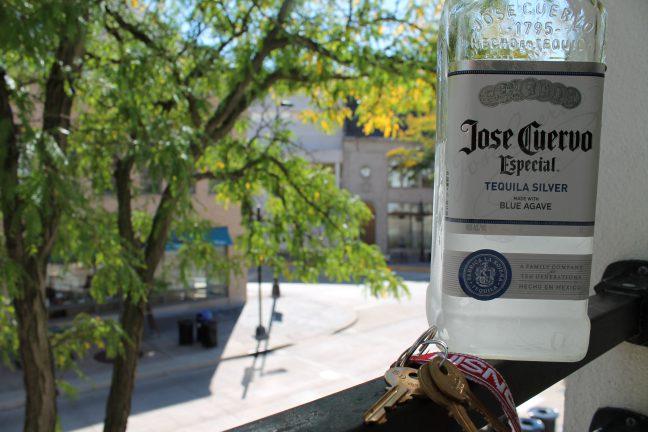With incidents of bigotry and hate popping up around the country since Donald Trump’s election as president, many members of minorities in America, including those at the University of Wisconsin, continue to live in fear.
As of Nov. 14, there were no recorded hate crimes or bias incidents on UW’s campus since the election. But UW minority students have expressed sentiments — even before the unprecedented election of Trump — that they don’t feel safe on campus.
Experts and students alike are concerned that UW’s pervasive drinking culture may be partly to blame.
This past summer, UW was ranked by the Princeton Review as the number one party school in the nation.
Jennifer Rabas, alcohol, tobacco and other drugs prevention coordinator at University Health Services, said a UHS survey released last spring called “The Color of Drinking” revealed that incidents of racial bias and feelings of isolation experienced by minorities are related to UW’s drinking culture.
According to the survey, students of color have the highest non-drinking rates, yet 65 percent say their academics, social groups, self-esteem, safety and overall experience are greatly affected by drinking culture.
The survey also found that 48 percent of students of color at UW experience microaggressions from intoxicated students.
Ricardo Rangel, a UW junior and member of the Multicultural Greek Council, said he doesn’t see UW’s campus as a safe and welcoming space, especially after the incident where a Badger fan dressed up in an Obama costume with a noose around his head. Additionally, Rangel said as a Latino student he felt especially unsafe in places where there is high alcohol consumption.
Madison community reacts to hate speech following Halloween costume controversy
“I try to avoid Langdon Street and State Street just because I’ve heard a lot of my own friends say they’ve been called names on the street, especially when there’s a lot of … drunk white people around,” Rangel said. “We don’t feel safe around those spaces.”
Similarly, Farhat Bhuiyan, UW sophomore and Muslim Student Association secretary, said she doesn’t feel safe going to areas of campus that have a higher drinking population such as the Terrace or fraternities. She said when people get drunk they “loosen up” and say things they normally wouldn’t say.
According to the survey, 62 percent of students of color have experienced microaggressions, such being called derogatory names, racial slurs and having assumptions made about their language, culture, race or ethnicity based on their race.
Many students of color feel that the alcohol culture is all-encompassing when teachers make jokes about alcohol or when there is beer in foods at the Memorial Terrace, Rabas said. While students of color avoid areas on campus where microaggressions and harassment by drunk people would most likely occur, they can’t avoid the classroom, Rabas said.
“When #TheRealUW was being used to describe campus climate issues, one in five students using the hashtag were relating their negative experiences to alcohol,” Rabas said.
This creates a further sense of exclusivity and isolation.
ASM reviews adverse effects of UW drinking culture on students of color
Julia Sherman, Wisconsin alcohol policy project coordinator at the UW Law School, said UW’s ubiquitous drinking culture can be connected to Wisconsin having the highest binge drinking rates among people between the ages of 18 and 44.
Moreover, Wisconsin has a large number of places that sell and serve alcohol compared to other states.
“Alcohol is served at locations and events that would not be considered appropriate in other states to serve alcohol,” Sherman said. “For example, it is not uncommon to see alcohol served at children’s birthday parties.”
Wisconsin ranks in the top five states for lowest alcohol taxes on spirits, wine and beer, making it affordable for almost anyone, Sherman said. There are also very few controls on drink specials, which encourages overconsumption, Sherman said.
Excessive alcohol use costs Wisconsin billions, experts call for culture change
Rabas said UHS will most likely conduct another survey similar to “The Color of Drinking” in the upcoming spring, except this time they will also include white students, who were not included in the original survey. This could give professionals a comparison group making the survey data stronger, Rabas said.
“It could be that the culture is also having negative effects on all students,” Rabas said. “We just want to know to what degree and what those effects are.”
Hump day: UW’s top spot in party school ranking comes with a dark side
To create a safe and all-inclusive campus climate, there is still a lot of work to be done on this issue, Rabas said.
Rabas and others hope the next survey will provide a more detailed insight into where these students of color feel most comfortable compared to other students.
“This is really important research that I don’t think has been done anywhere else looking at microaggressions, racism and alcohol,” Rabas said. “I am glad we did this, and we are going to continue to see how this shapes out to other students and their experiences.”


